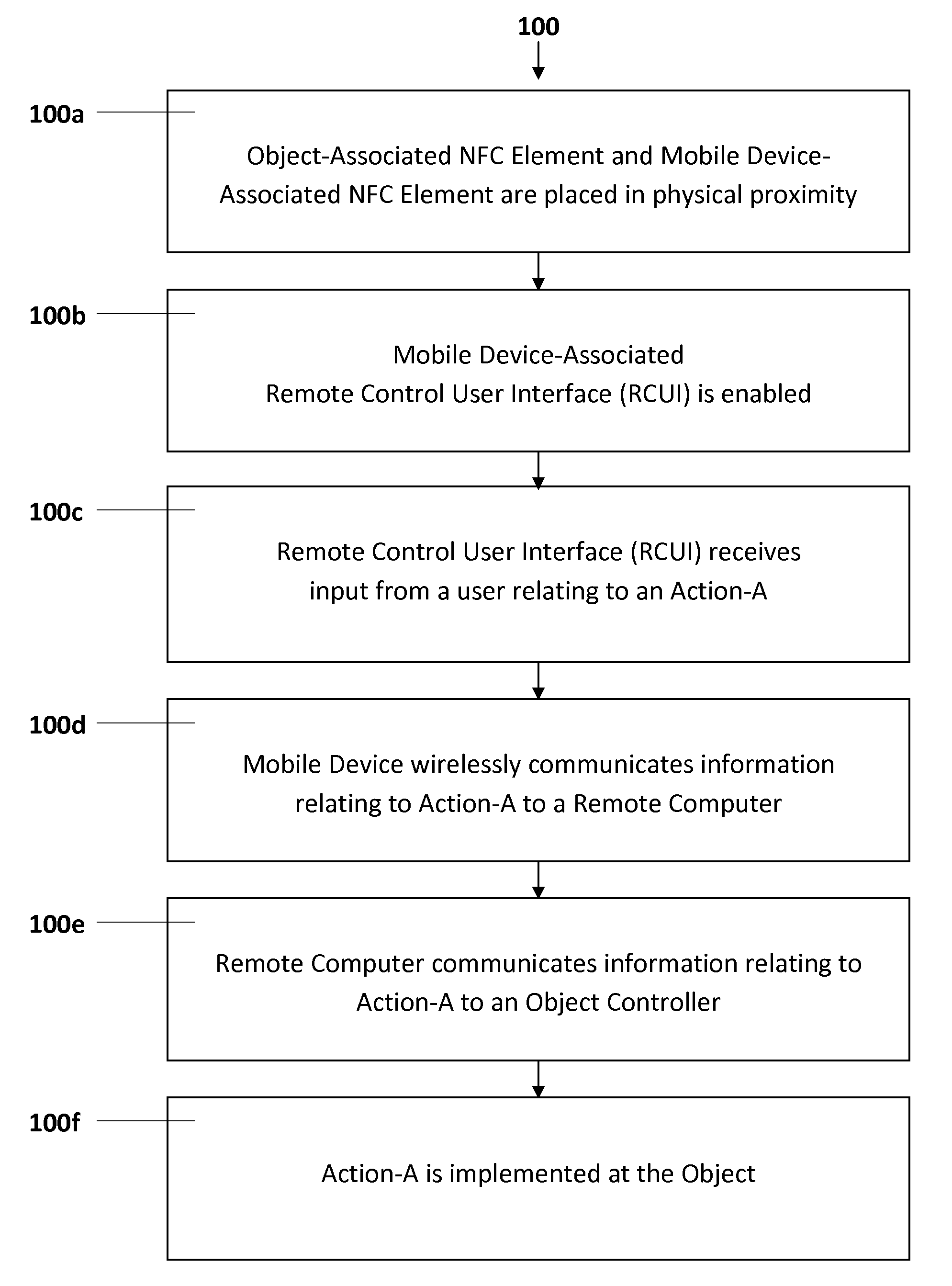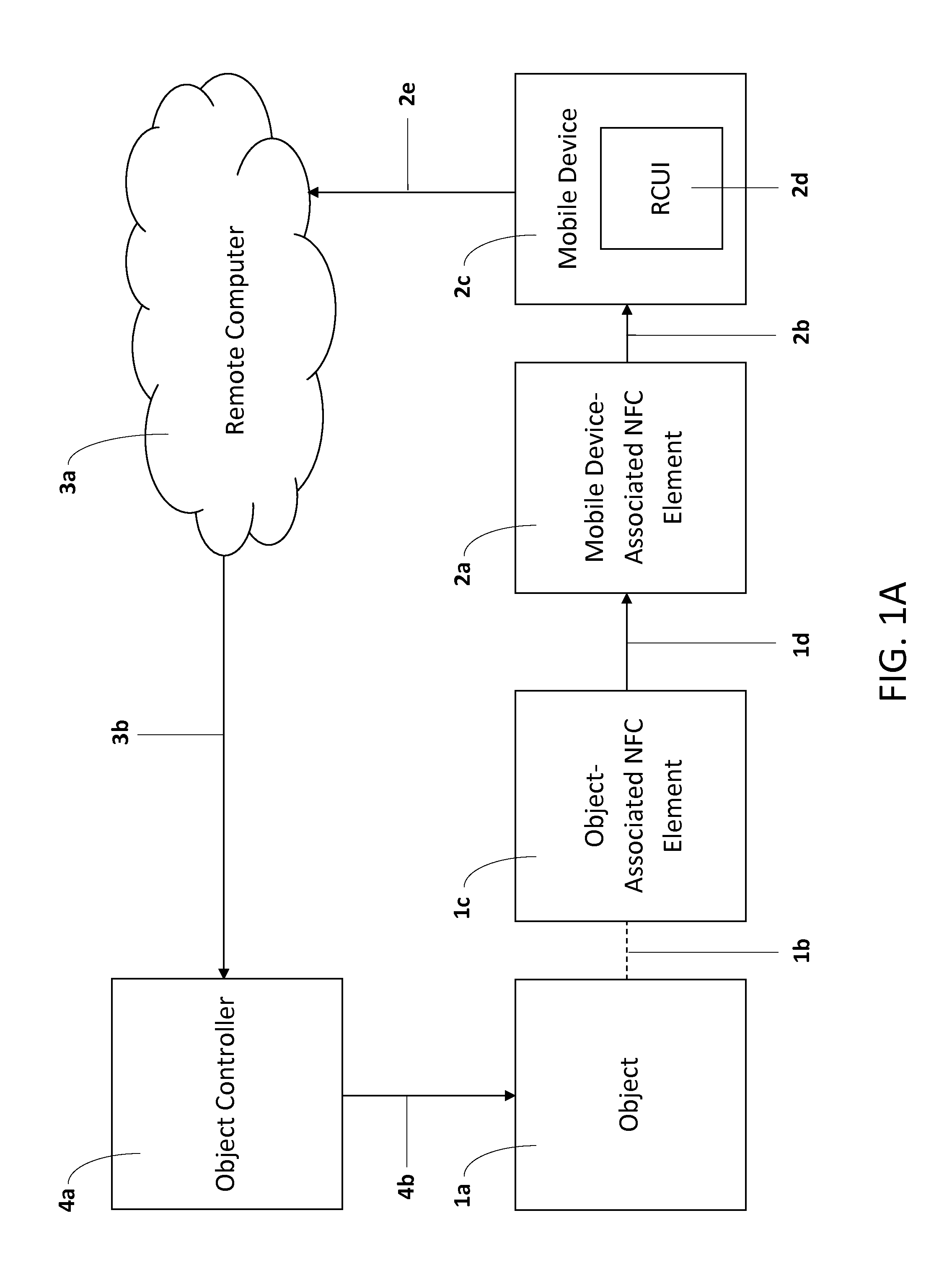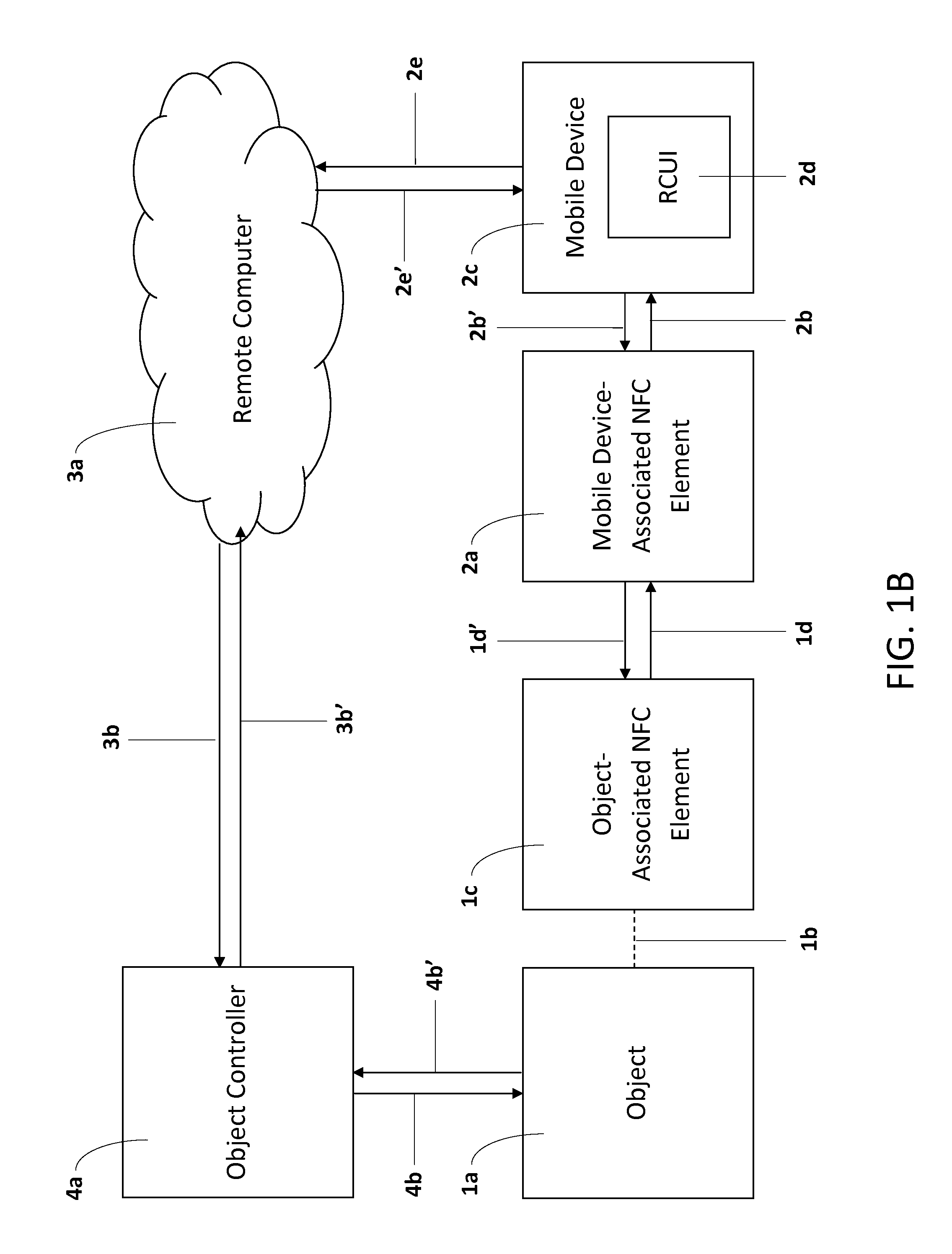Proximity-Enabled Remote Control
a remote control and proximity technology, applied in the field of proximity-enabled remote control, can solve problems such as general lack of real-time feedback to users
- Summary
- Abstract
- Description
- Claims
- Application Information
AI Technical Summary
Benefits of technology
Problems solved by technology
Method used
Image
Examples
Embodiment Construction
[0020]The present invention relates to systems and methods for proximity-based remote controls (also, without limitation, referred to as proximity-based identification communication) that may be used, for example, to facilitate the identification of a remotely controllable object and enable a remote control user interface (RCUI) to be presented by a mobile device that then allows a user of the mobile device to remotely control the identified object by means of the remote control user interface. Such a RCUI may be presented by a mobile device on an electronic display as soft keys, for example, and such soft keys may be arranged or otherwise presented in a way that is relevant to (or even reconfigurable by) the system or a user, possibly based on user identification, authentication, preferences, user location, past behavior, or other information. The ability for a user to tag (e.g., approximate a mobile device to) an object to thereby remotely control the object may be implemented in ...
PUM
 Login to View More
Login to View More Abstract
Description
Claims
Application Information
 Login to View More
Login to View More - R&D
- Intellectual Property
- Life Sciences
- Materials
- Tech Scout
- Unparalleled Data Quality
- Higher Quality Content
- 60% Fewer Hallucinations
Browse by: Latest US Patents, China's latest patents, Technical Efficacy Thesaurus, Application Domain, Technology Topic, Popular Technical Reports.
© 2025 PatSnap. All rights reserved.Legal|Privacy policy|Modern Slavery Act Transparency Statement|Sitemap|About US| Contact US: help@patsnap.com



